RF/ElectroMagnetics Laboratory
The RF/Electromagnetics lab at FIU has an extensive array of RF equipment. More than 5 network analyzer systems are available and operate from 10 MHz to 115GHz. Materials measurement capability is also available either using commercial analyzers or in-house fixtures for broadband and higher frequency characterization.
An indoor anechoic chamber to support research in antennas, remote sensing, photonics, RF integrated circuits, and wireless systems planning. There are also major activities in medical sensors, RFIDs, terahertz and textile electronics as well as ink-printing, 3D printing and microwave etching facilities. At least 6 faculty members are engaged in the above research activities.
Equipment found in lab:
- N5225A PNA Microwave Network Analyzer, 50 GHz
- E4421B ESG-A RF Analog Signal Generator N5181A MXG RF Analog Signal Generator (100M-6GHz)
- E5061B network analyzer 5Hz-3GHz
- E5071C Network Analyzer 20GHz
- HP 8510, network analyzer systems
- Portable N9923A FieldFox RF Vector network analyzer
- StarLab Near-Zone Anechoic Chamber 18 GHz
- Anechoic Chamber: ETS-Lindgren’s Model AMS-8050: 650 MHz to 18 GHz operation
- Film Printing/Prototyping: Fujifilm DMP-2831
- The LPKF ProtoMat S103 Circuit board plotter for producing PCB prototypes
- MAKERBOT 3D Printer Z18 3D PRINTER
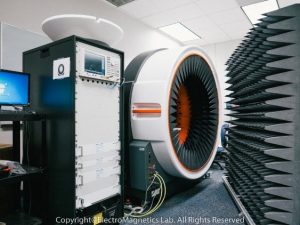
STARLAB 18 GHz Antenna Measurement
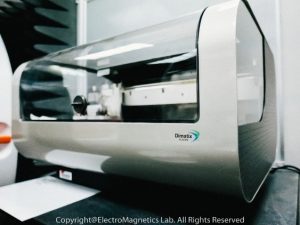
Fujifilm DMP-2831 Fluidic Metal Deposition
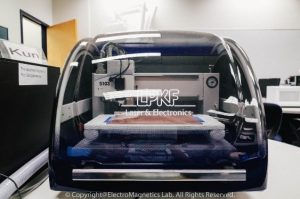
LPKF Circuit Board Plotter
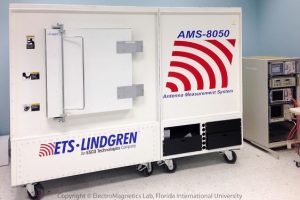
ETC – Anechoic RF Enclosure
RF/Communications Laboratory
The RF/communication lab contains a wide variety of measurement and test equipment’s for implementing 5G communication system and beamforming systems. This lab also has a mmWave probe station for measuring communication systems at mmWave. It is equipped with the latest state-of-the-art MIMO test equipment from Keysight technologies capable of supporting bandwidths up to 6GHz and analyzed using the SYSTEMVUE software.
Equipment found in lab:
- N52222A with operation up to 110 GHz
- VDI Tx/Rx extenders up to 110GHz for mmWave systems
- 33622A Waveform generator – Dual channel 120 MHz
- N5182B MXG RF Vector Signal Generator (9kHz-6GHz) with a BW of 160-200MHz
- N9030B PXA Signal Analyzer 3 Hz to 50 GHz
- M1971V V-band WG Harmonic Mixer to extend the PXA freq. range
- DSOS254A 2.5 GHz, 4 Analog Channels with 89601B Software
- 2×2 MIMO programmable MIMO transceiver up to 110 GHz with M9734A Guzik Digitizer and M8190A arbitrary waveform generator.
- Optical tables and optical sources.
- N5183B 9 KHz to 31.8 GHz Signal Generator
- E3631A DC Sources, N1914A EPM Dual-Channel Power meters, and Amplifiers
- V8486A & W8486A – Waveguide Power Sensor, 50- 110 GHz
- N1914A – Power Meter
- Reduced hardware digital beamformer
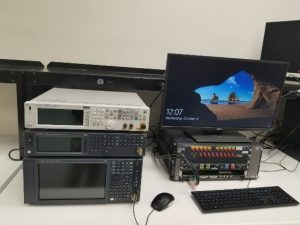
2×2 MIMO Device
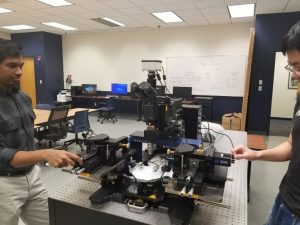
Cascade Probe Station
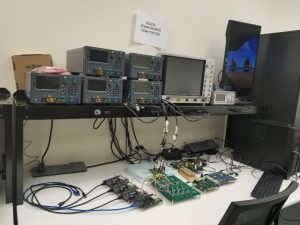
Digital Beamforming Receiver
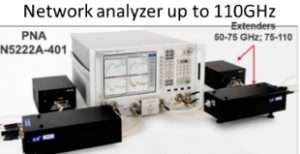
N5222B PNA with VDI Extenders
Neuronal Mass Dynamics Laboratory (NMD)
The primary research interest of the Neuronal Mass Dynamics (NMD) laboratory is the development of methods for the integration of different brain imaging modalities. These methods will find direct translations into clinical practice, for instance in the diagnosis and intervention of a variety of brain disorders. Although epilepsy constitutes our primary focus of attention in the “ramping up” period (2012-2015), other brain disorders (e.g. Alzheimer Disease and Autism) will be included later on in our portfolio. For each disorder, our research focuses on three major areas: a) abnormalities of the cortical microcircuits, b) the biophysics of the neurovascular decoupling and c) genetic imprints by inflammatory processes. These three areas of interest are linked via Biophysical Models developed in the lab. Members from the NMD lab evaluate their methods using pre-clinical models (i.e. rodents) of each brain disorder. In the NMD lab, two groundbreaking techniques have been developed. The first one is a high-resolution 3D silicon-based probe (Neuronexus Tech) and the second one is an EEG mini-cap both for electrophysiological recordings at different brain scales (WB Engineering). These techniques are combined with both standard observation modalities and computational models for mesoscopic phenomena in the cerebral cortex.

AM Systems Isolated Pulse Stimulator
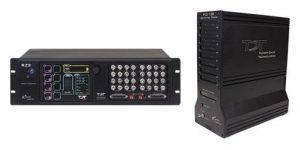
TDT RZ2D 32 Channel Neurophysiology
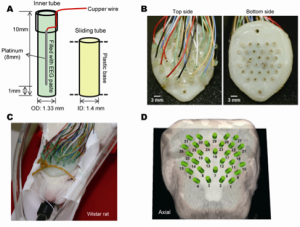
Neurovascular Coupling
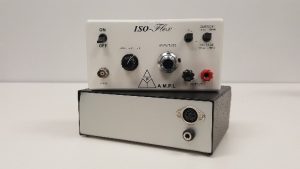
ISO-Flex Stimulus Isolator
Integrated Nano-Systems Research Laboratory (INSYST)
Equipment found in lab:
- MultiView 2000TS Integrated Atomic Force Microscopy (AFM) inbuilt with RAMAN
- THz Time Domain Spectroscopy (TDS) system (0.1 – 3 THz)
- HORIBA Scientific (Jobin-Yvon) iHR320 Imaging Spectrometer
- Backward Wave Oscillator (BWO) THz spectrometer (0.2 -1.1THz)
- PV Measurements QEX10 Internal Quantum Efficiency (IQE) measurement system
- Newport solar simulator
- Micromanipulator DC probe station
- CVD reactor (nanoparticel growth)
- Sonochemical material growth system
- CHI 610 Potentiostat (Electrochemical Analyzer/Workstation)
- Humidity and oxygen control glove box
- Chemical hood
- ANDO AQ4321D tunable laser (1520-1620nm)
- Santec 210F tunable laser(1280-1630nm)
- Newport 1835-C optical meter
- Newport 818-IR calibrated photo-detector
- Agilent 4156A High Precision Semiconductor Parameter Analyzer
- Micromanipulator Probe station with hot chuck
- Janis Research ST-100 Cryostat
- Tektronics 100MHz Digital Oscilloscope
- Stanford Research SR830 Lock-in Amplifier
- Low noise pre-amplifier

THz Time Domain Spectroscopy System
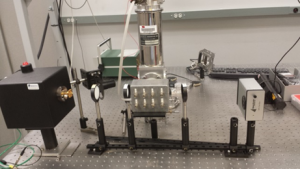
Backward Wave Oscillator (BWO) Based
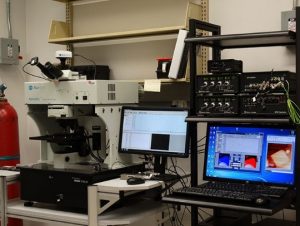
Multiview 2000TS Integrated Atomic Force Microscopy (AFM) with Built-in Micro-Raman Spectroscopy
Adaptive Neural System Laboratory
The Adaptive Neural Systems Laboratory (ANS) human studies lab occupies approximately 1,000 sq. ft. and is partitioned into different use spaces.
It is configured and equipped for studies on people with neurological disabilities and offers the ability to perform non-invasive measurements of biomechanical and neural control variables, including kinematics (PhaseSpace 10 camera system), kinetics (two Bertec forceplates), gait analysis (Mobility Lab (APDM) portable unit), EMG (16 channels Wireless, DELSYS Trigno), BioAMP processors and stimulator (Tucker-Davis), EEG (ANT-Neuro), TMS (MagPro R30), fNIRS (NIR Scout 384 channels/frame) and ASA-lab software along with VISOR navigation system to in integrate and synchronize TMS, EEG and fNIRS in one session.
The ANS histology lab (approximately 500 sq. ft) is located at FIU’s Modesto Maidique Campus in the Owa-Ewah building, has a chemical hood, space for making electrodes that require chemical etching and welding and conduction of histological procedures.
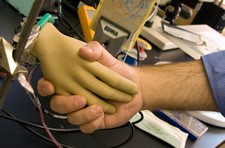
Neural Enabled Prostheses with Sensorimotor Integration
